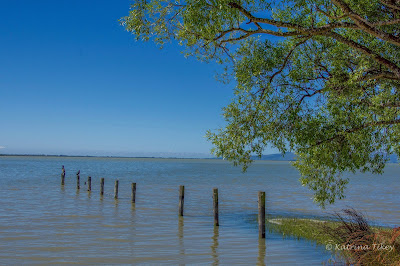The Bridle Path (or if I got to name it, 'The Brutal Path), is steep - very steep, but it's so worth the effort. Even though it feels like the summit doesn't get any closer despite how long you've been slogging it out - when you do reach it - it's totally worth it. The view is stunning.
I parked the car in the small carpark for the track walkers. It's on the city side of the Bridle Path, just below the foot of the gondola. The walk starts off at a gentle gradient (but don't be fooled, it's a trick- it gets steeper and STEEPER).
This historic and popular walk was originally created in 1850.
In December 1850, eight hundred British Settlers arrived on the first four ships. At that time there were only a dozen houses in Lyttleton and Christchurch. Sumner Road was being made but hadn't been completed, so the chief surveyor, Captain Thomas cut the bridle path.
The early settlers carried essential household goods on their backs over the track, the heavier items went by boat across the Sumner Bar. Early in 1851 the path was upgraded for horses to use (that's how the name Bridle Path came about). Over the next 16 years thousands of immigrants walked this track until the Lyttleton rail tunnel opened.
The walkway has a few memorial seats, in remembrance of the pioneers and the first four ships. These were welcome places to stop, admire the view and catch my breath.
Yesterday, when I walked the Bridle Path, it was midday and scorching hot. There was hardly any shade so I was looking forward to reaching the summit. I'd been told it was a steep walk and I'd read about that too, but despite my lack of fitness I was determined to get to the top.
To highlight my fitness level (or lack of), some lady in her bright pink, lycra gym gear lapped me. Yes, she passed me going uphill and passed me again going down. Shame.
And then one lovely lady, who was walking down hill and looked to be about my fitness level (i.e. staggering, puffing and sweaty) stopped to chat and offer Oakly and I a drink. She said I was almost at the top (I truly thought she was tricking) but she wasn't ... and about 100 metres more of steepness, I made it. Then I heard cheering from below, and there she was yahooing and clapping my accomplishment - what a cool lady!
I made it to the summit. Yay!
The view overlooking Lyttleton was spectacular. I was lucky enough to reach the summit the same time a local man did. He told me he walks the Bridle Path three to four times a week! He pointed out a few landmarks and shared some history.
Looking at the photo below - the mountain just to the left of the yellow broom (underneath the lowest white cloud ) is Mt Herbert.
Near the centre of the photo is a dark green clump of pine trees, that's Diamond Harbour (a small settlement on Banks Peninsula).
Legend has it, Diamond Harbour got its name from an early settler, who after observing the sun reflecting on the water said it looked like a thousand shining diamonds.
A ferry connects Diamond harbour to Lyttleton, which residents use to commute to the city.
Looking to the centre, far right of the photo below, you can see an outcrop of land. That's the east side of 'Quail Island'.
Europeans farmed the island for a short time in 1851. Then it was used as a quarantine station in 1875, and later a small leper colony from 1907 - 1925. It was also used as a hospital during an influenza epidemic.
Quail Island was also used for training dogs used in Antarctic expeditions in the early 20th century.
Nowadays it's a reserve with safe swimming beaches. A ferry service is available to take visitors over to the island.
Oakly and I spent awhile sitting at the top, overlooking Christchurch and then Lyttleton on the other side.
It was so much easier walking back down - although I had to watch my step as the gravel was dry and slippery and STEEP.






















































